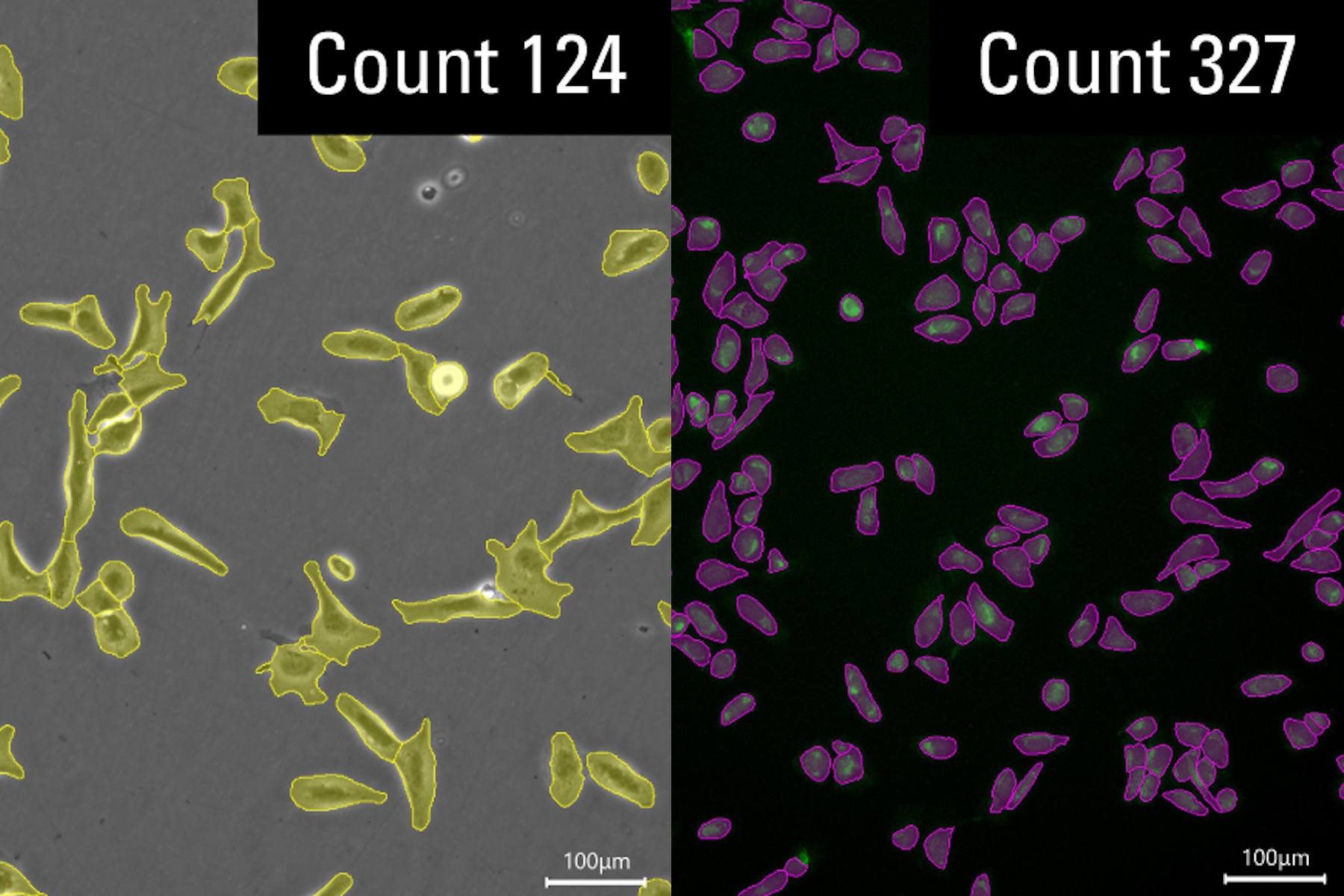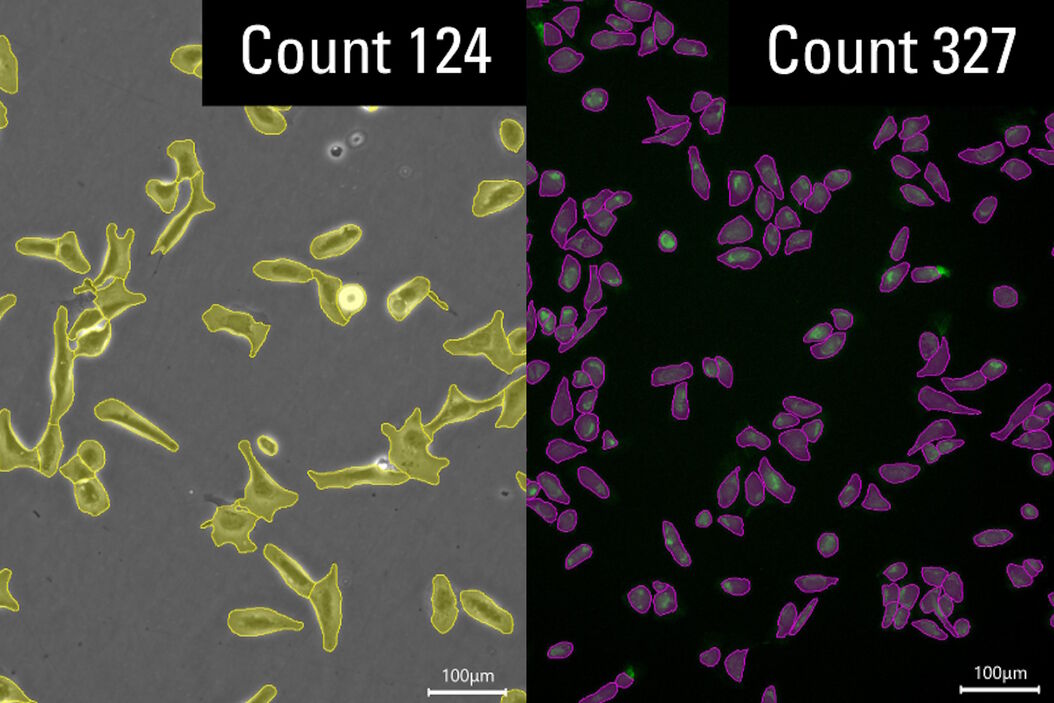Manual versus AI-based cell counting
Manual counting of cells is labor-intensive, time-consuming, and prone to subjectivity and human error, leading to inconsistent results. The ever-growing demand for high-throughput and reproducibility means technological solutions are needed to overcome the limitations of manual cell counting. One solution for enhanced precision and efficiency when cell counting for 2D cell cultures is AI or artificial intelligence. AI methods can streamline the cell counting process, reduce human error, and provide a higher level of accuracy and efficiency compared to manual counting.
AI cell counting
The AI-based cell counting approach exploits:
- State-of-the-art image analysis algorithms with deep learning
- Image analysis algorithms for efficient cell segmentation and counting
- Data preprocessing to ensure optimal input for the AI model
- Deep learning integration for cell recognition using pretrained models
As a result, AI cell counting offers accuracy and efficiency for higher throughput and more time available for other research tasks. AI models are adaptable to diverse experimental conditions and cell types.
Cell counting with Mateo FL
The AI cell counting results presented in this article were obtained with the Mateo FL microscope. They show that cell counting is completed in 5 secs with AI versus 15 mins for manual counting. Therefore, AI cell counting with Mateo FL is 180x faster than counting by hand.






